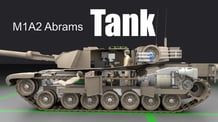Japan offered the USSR it’s a second-largest island – Hokkaido – in exchange for neutrality and withdrawal from the war in 1945. Anatoly Koshkin, a professor at the Institute of Oriental Countries at the Institute of Oriental Studies of the Russian Academy of Sciences, a member of the executive board of the Russian Association of World War II historians, told RIA Novosti.
“In the nineties, there was sensational information in Japanese newspapers. Then we opened all the archives, in the archives of the former KGB they found a telegram from Tokyo that the Japanese were ready to give up the island of Hokkaido in 1945 for non-aggression, for the preservation of neutrality by the Soviet Union,” said Koshkin.
The scientist added that the Soviet Union never claimed this island.
In August 2019, a virtual map of Japan was published, in the territory of which four Russian islands of the Kuril ridge were included: Iturup, Kunashir, Hamobai, and Shikotan. They were “taken” to Hokkaido Prefecture.
On July 26, 1945, at the Potsdam Conference, a declaration was adopted in which the United States, Great Britain, and China demanded unconditional surrender from Japan under the threat of its destruction. Official Tokyo tried to negotiate mediation with Moscow but to no avail.
In 1956, the Soviet-Japanese declaration was adopted, announcing the end of the state of war and the restoration of diplomatic relations. At the same time, the USSR agreed to transfer the Shikotan Islands and a number of adjacent small uninhabited islands to Japan on the condition that their actual transfer to Tokyo’s control would be made after the conclusion of a peace treaty.
However, in 1960, Japan and the United States extended the Security Pact, which allows American troops to be stationed on Japanese soil. After that, Moscow refused to consider the issue of transferring the islands to Tokyo.














